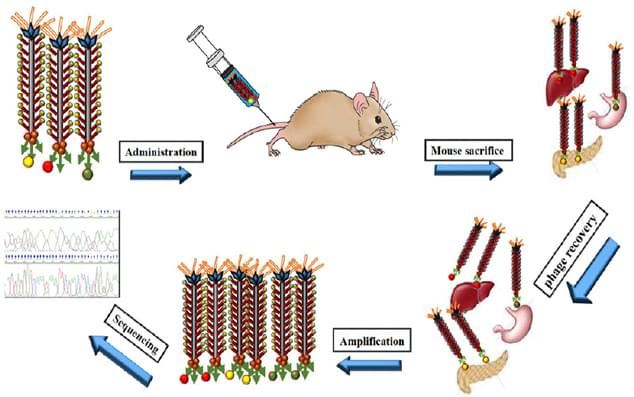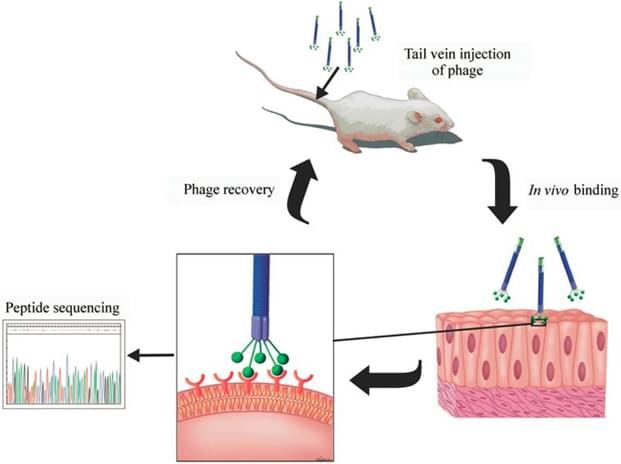Creative Biolabs offers innovative in vivo phage display service for isolating vascular endothelium targeting peptides. This service is supported by our exclusive in vivo phage display technical platform. This unique platform engages the standardized in vivo biopanning protocols with a personalized approaching strategy, which is specifically designed to target diversify tissues and consequently fit customers’ very unique research objectives.
Vascular endothelium is an essential component of body for either physiological function or as therapeutic target. Vascular endothelium, as a type of epithelium, lines the interior surface of blood vessels, forming an interface between circulating blood in the lumen and the rest of the vessel wall. Vascular endothelial cells consist in the entire circulatory system, from the heart to the smallest capillaries, and play a crucial role in many physiological processes, including blood-tissue exchange, activation and migration of white blood cells, fibrinolysis, and coagulation. In diverse parts of the body, vascular endothelium is morphologically and functionally different. It is well accepted that vascular endothelium has obvious molecular heterogeneity that tissue- and organ-specific molecules expressed in various vascular endothelium are different. Moreover, relevant researches have shown that vascular endothelium may be involved in the process of certain tumors metastasize to healthy tissues. Thus, deeper investigation to target vascular endothelium, and achieve more efficient delivery to specific organs and tissues is obviously meaningful. In this way, great potential has been indicated to discover and develop unique tissue- or organ-specific molecules from vascular endothelium as therapeutic tools which may improve the efficacy of many promising therapeutics.
Creative Biolabs has applied a powerful platform to select specific peptides targeting vascular endothelium with in vivo phage display random peptide libraries. Following intravenous injection, this method is able to isolate large amount of peptide ligands which specifically home to endothelial cell receptors of diverse tissues, such as lung, skin and pancreas.This technology can be used to identify novel endothelial receptors expressed differentially in normal and pathological conditions, which extend the ‘functional map’ of the vasculature and enhance deeper understanding of endothelial biology. Due to the ability of directly against specific vascular receptors, such selected peptides can be in vitro or in vivo used as therapeutic compounds targets or imaging agents for endothelial cells. In addition, the vessel-specific peptides may also play a role in clinical applications of diseases such as cancer and other conditions that exhibit distinct vascular characteristics.
 Fig. 1 Schematic representation of in vivo phage display. (Bakhshinejad et al. 2015)
Fig. 1 Schematic representation of in vivo phage display. (Bakhshinejad et al. 2015)
 Fig. 2 In vivo phage display for vascular endothelium targeting. (Arap 2005)
Fig. 2 In vivo phage display for vascular endothelium targeting. (Arap 2005)
References
All listed services and products are For Research Use Only. Do Not use in any diagnostic or therapeutic applications.